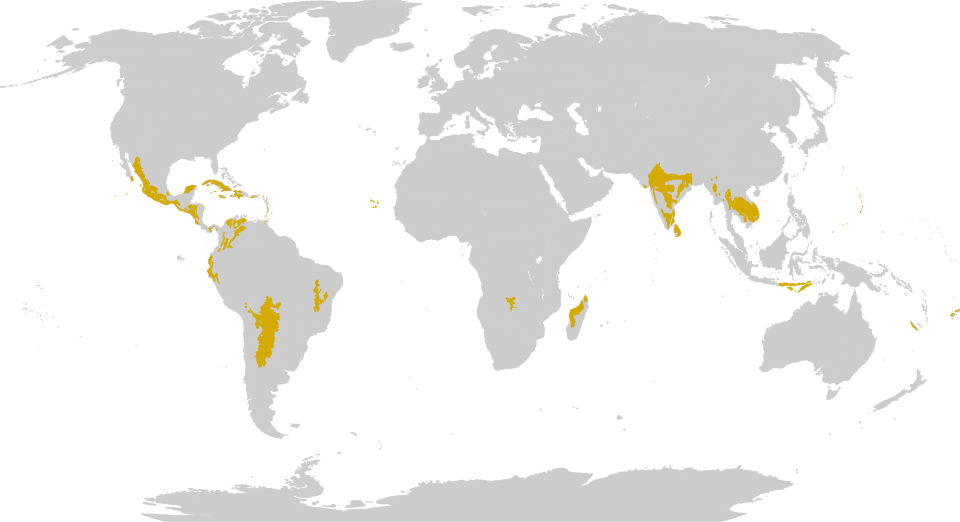Temperate Broadleaf and Mixed Forests (TBM)
- Shanti Bants
- Aug 26
- 3 min read
Temperate broadleaf and mixed forests are predominantly found in regions characterised by distinct warm and cool seasons, which encompass a variety of climates such as humid continental, humid subtropical, and oceanic. These climates are critical to the development and sustainability of these forests, providing moderate annual average temperatures that typically range from 3 to 23 °C (37 to 73 °F). The combination of warm summers and cool winters creates an ideal environment for a diverse range of plant and animal species. Within these forests, the climatic conditions are generally favourable, as they thrive in relatively warm and rainy environments. However, there are instances when these areas experience a noticeable dry season, which can influence the growth patterns and biodiversity of the forest ecosystems.

The most diverse and distinctive examples of temperate broadleaf and mixed forests can be found in regions such as central China and eastern North America. These areas are renowned for their rich biodiversity, which includes a wide variety of tree species, shrubs, and herbaceous plants, all contributing to the ecological complexity of the forest. Other significant eco-regions that support these types of forests include the majestic Himalayas, the lush landscapes of Western and Central Europe, the southern Black Sea coast, and various regions across Australasia. Additionally, temperate broadleaf and mixed forests can be found in the southern parts of South America and the Russian Far East, each displaying unique characteristics shaped by their specific environmental conditions and geographical features.
In East Asia, for instance, the dry season typically occurs during the winter months, which can have a profound impact on the forest's ecology and the life cycles of various species. Conversely, in Mediterranean climate zones, the dry season is observed during the summer, leading to adaptations in both plant and animal life to withstand the drier conditions. Other regions, such as central eastern North America, experience a relatively uniform distribution of rainfall throughout the year, with annual precipitation usually exceeding 600 mm (24 in) and often reaching over 1,500 mm (59 in). This consistent rainfall contributes to the lushness and vitality of these forests. However, it is noteworthy that some regions, particularly in the Middle East, may receive as little as 300 mm (12 in) of precipitation annually, which can limit the types of vegetation that can thrive there. In stark contrast, mountainous areas in New Zealand and the Azores can experience nearly 6,000 mm (240 in) of rainfall, creating incredibly rich and diverse ecosystems. Generally, temperatures in temperate broadleaf and mixed forests are moderate; however, certain parts of Asia, such as Ussuriland or the Upper Midwest, exhibit conditions where temperate forests can flourish despite enduring harsh winters and extremely cold temperatures.
The typical structure of temperate broadleaf and mixed forests is remarkably complex and consists of four distinct layers, each playing a vital role in the overall health and functionality of the ecosystem. The uppermost layer, known as the canopy, is formed by tall mature trees that can reach impressive heights ranging from 30 to 61 m (100 to 200 ft). This layer is crucial for capturing sunlight, which is essential for photosynthesis and supports the growth of the entire forest beneath it. Below the canopy lies the understory, which is divided into three layers and is approximately 9 to 15 m (30 to 50 ft) shorter than the canopy.
The highest portion of the understory is referred to as the sub-canopy, which consists of smaller mature trees, saplings, and suppressed juvenile canopy trees that are patiently waiting for an opportunity to grow into the canopy when gaps occur due to natural disturbances like storms or disease. This layer is vital for providing habitat and food for various wildlife species. Below the sub-canopy is the shrub layer, which is made up of low-growing woody plants that contribute to the forest's biodiversity and provide cover and food for smaller animals. Finally, the lowest and most diverse layer is typically the ground cover or herbaceous layer, which consists of a rich assortment of ferns, wildflowers, and other herbaceous plants. This layer plays an essential role in nutrient cycling, soil stabilisation, and providing habitat for numerous insects and small organisms, thus supporting the entire ecosystem.





Comments